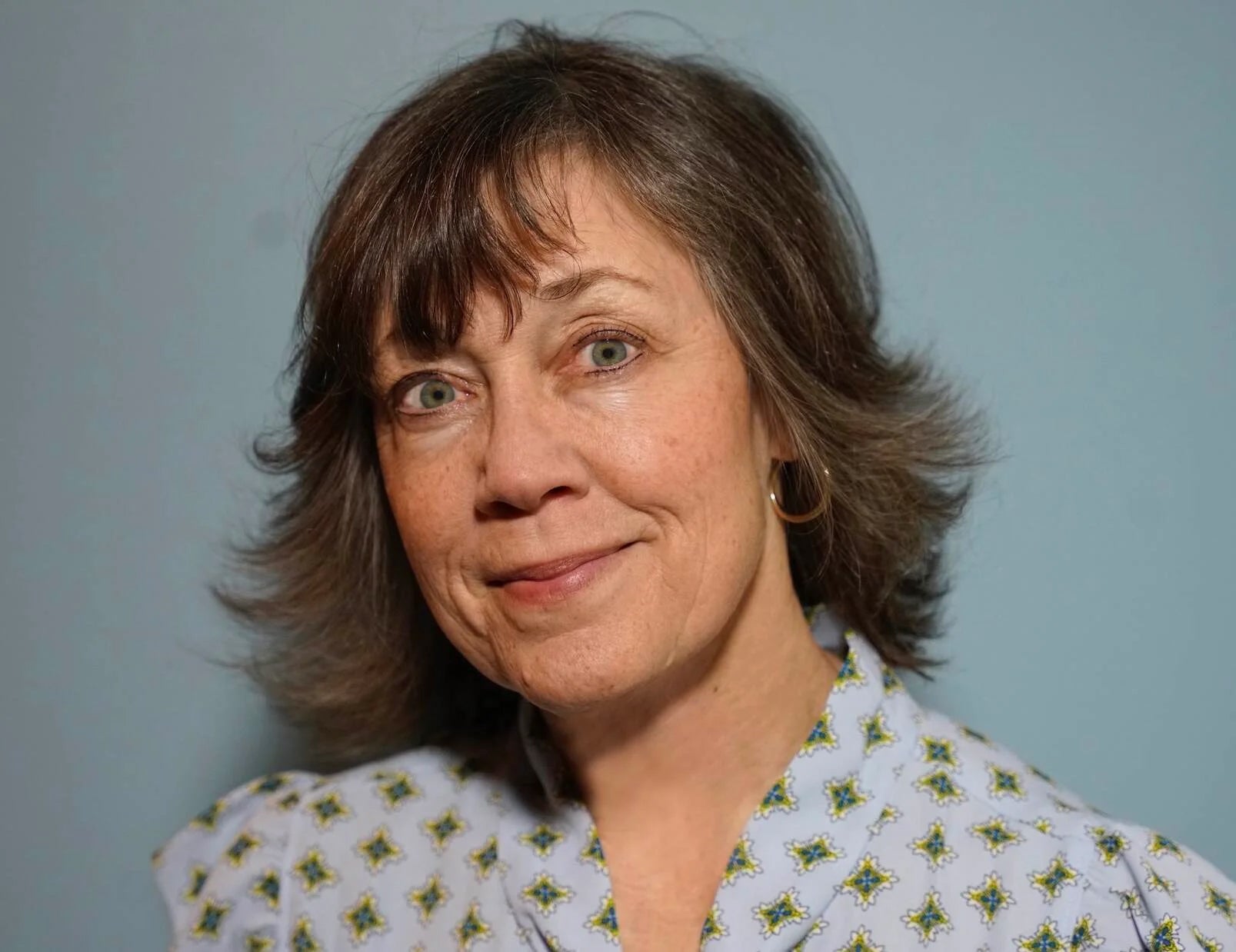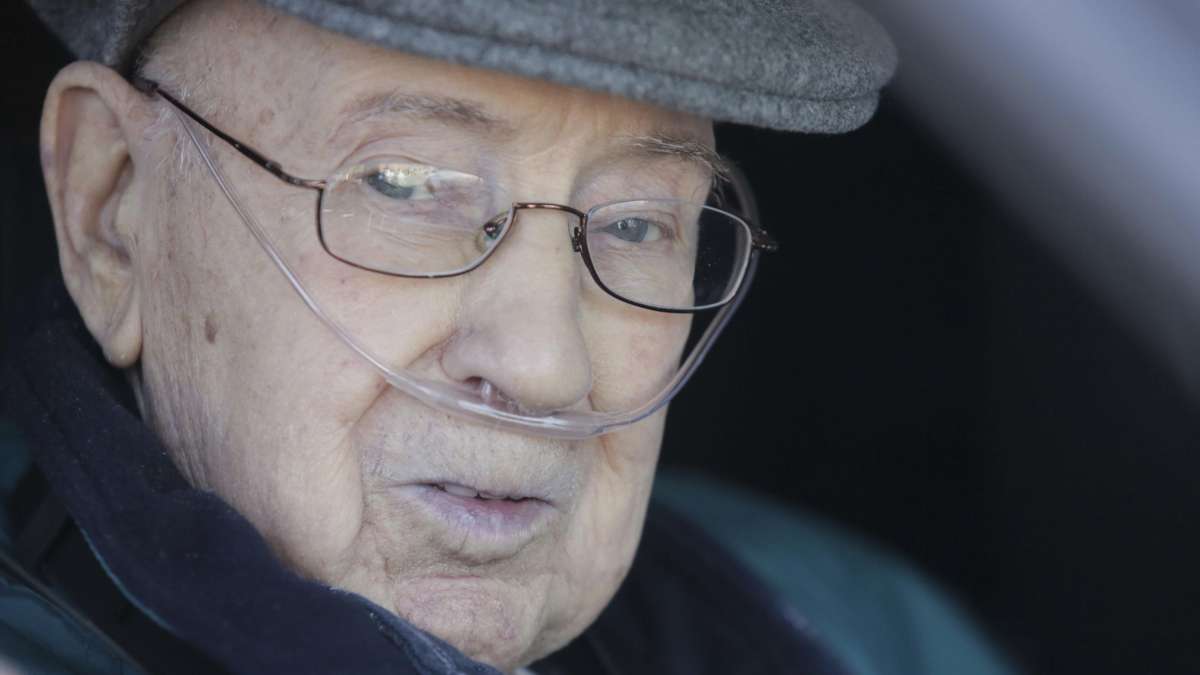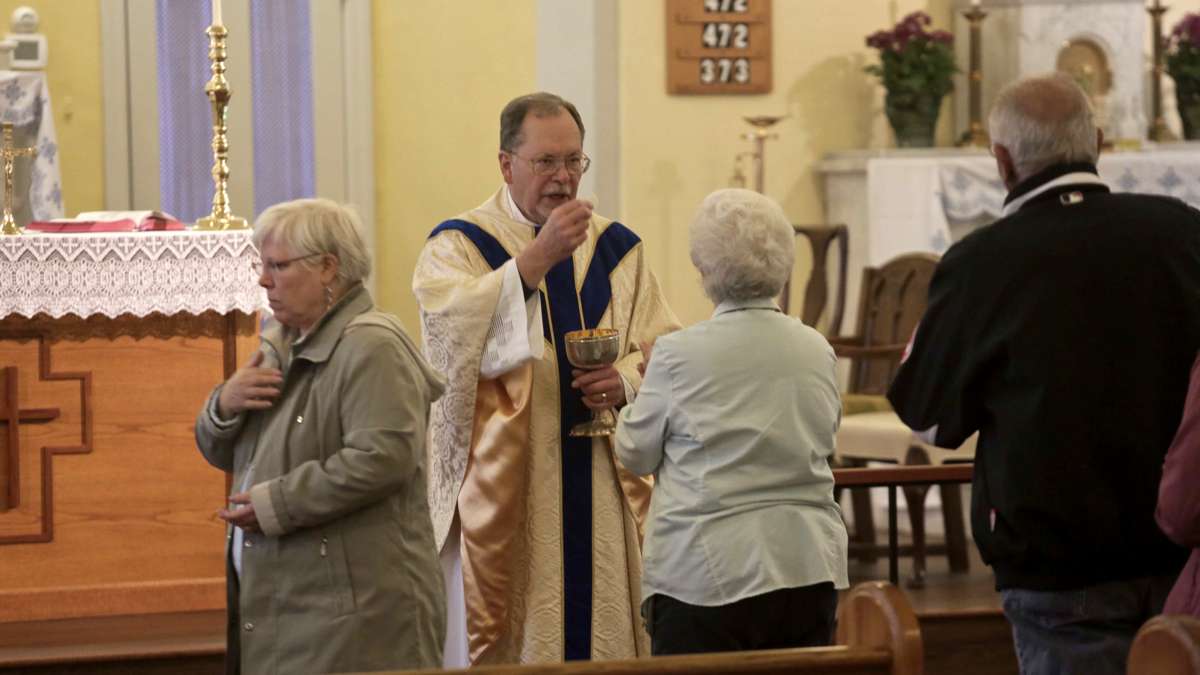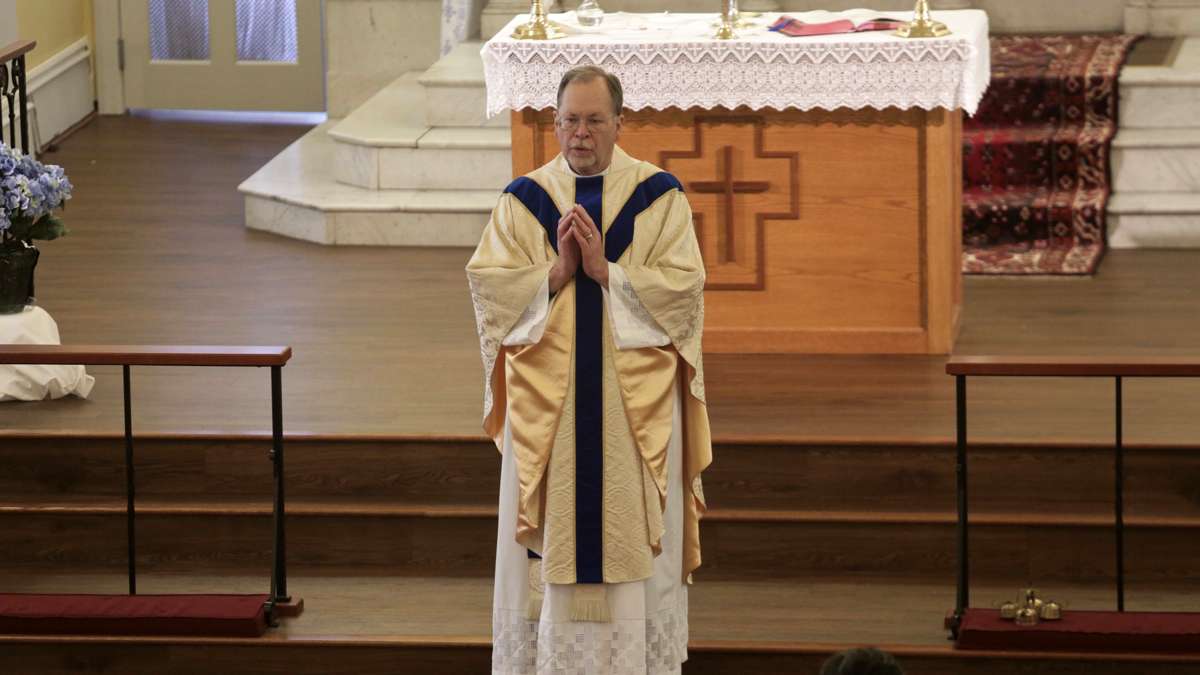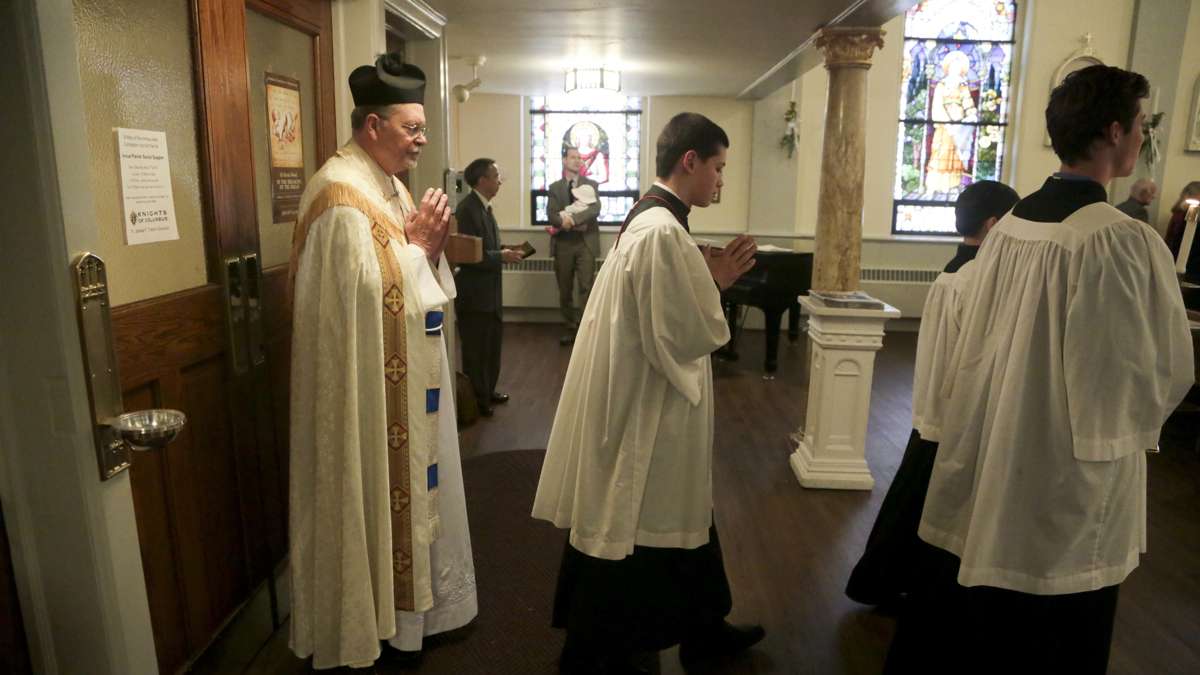Making the transition from Lutheran minister to Catholic priest — with a wife
ListenAs the Roman Catholic Church struggles with a shortage of American men interested in joining the priesthood amid a rapidly aging clergy, a small number of married men have received permission from Rome to serve as Catholic priests.
As the Roman Catholic Church struggles with a shortage of American men interested in joining the priesthood amid a rapidly aging clergy, a small number of married men have received permission from Rome to serve as Catholic priests.
One of them is the Rev. Leonard Klein, a former Lutheran pastor, and now the administrator of the Cathedral of St. Peter, St. Patrick’s and Saint Mary’s, all part of the Diocese of Wilmington.
On a recent chilly spring morning, the strong pulse of the organ and unfamiliar sounds of Latin spilled from St. Patrick’s Church in Wilmington. Inside, hundreds filled the pews for the Latin version of Mass that was the norm for centuries. Many of the women even wore lacy veils on their heads.
Klein celebrated Mass, chanting the prayers and waiting for the traditional responses.
His path to the priesthood was anything but traditional. A Lutheran pastor for 30 years, he is one of just a few hundred married ministers in the U.S. who have gone through the relatively brief process of becoming ordained as a Catholic priest.
While he was happy as a Lutheran, Klein said he always felt an attraction to Catholic theology and, eventually, the church’s positions on abortion and the authority of the Pope.
“Sort of by a slow process of evolution, I found myself with a toe, then a foot, then an ankle, then a tibia, and finally, crossed over,” he said.
Klein’s wife, Christa, felt the same pull, as did two of their adult children. After much soul searching, they made the somewhat difficult decision to enter the Catholic church.
“The hardest part, I think we would both say, was telling our elderly parents,” said Klein, looking at his wife for confirmation.
“To tell your parents, in their 80s, when they are beginning to lose their mental capacity, and their understanding of complex arguments, is very painful,” Christa Klein agreed.
The parting from their Lutheran flock in York, Pennsylvania, was for the most part an amicable one, with a dash of levity.
“One woman on the council, whom I’d known in a professional capacity before she’d joined the church, said, ‘I’m happy for you. We knew how much you were suffering,'” Father Klein said.
Returning to an ancient tradition
Some of the earliest Christian leaders were married men. In fact, before the First Lateran Council banned the practice in 1123, married men had served as Roman Catholic priests.
So far, very few married clergy apply to become Catholic priests, which has been allowed since the early ’80s. So it doesn’t seem that the Vatican or the American church are looking to this as a way of solving the growing priest shortage.
Celibate priesthood is not necessary — dogmatically, Klein said. Still, he doesn’t anticipate young seminarians will be allowed to marry anytime soon. Yet, he is encouraged by the continued openness of the church to those in his situation.
And while the Vatican is unlikely to reverse the rules on celibacy for priests any time soon, the welcome from the Catholic congregation in Wilmington was overwhelmingly warm, Christa Klein said.
An informal polling of parishioners outside St. Patrick’s found strong support for the married Father Klein.
“I love it. I think all priests should be able to get married, if they choose to,” said Anne Marie Dominick, a lifelong congregant. “You know, this is the 21st century. We’re not back in the 16th century anymore.”
Parishioner Christina Holdnack said Klein is a wonderful priest, and she’s grateful to have him serve. In general, though, she agrees with the tradition that priests should not be married.
“Being a married woman, I see how there’s a lot of responsibility in having a family, having a wife and spouse, that would take your time and energy,” Holdnack said. “Maybe God wants it this way, so the priest can dedicate his life to the church.”
Rules and regulations
The Catholic Church does have some restrictions on married clergy.
“When the bishop receives permission to ordain a married man, the letter from Rome says that, preferably, this priest is not to be in full-time parish ministry, so as not to confuse people, and not normally to be appointed a pastor,” said Klein, 69.
And should Christa pass away first, Klein cannot remarry.
“I take the same vows as all the other priests, which is not to get married,” he said with a chuckle.
“There are sacrifices to be made,” added his wife. “I share him with the bishop!”
“Probably the bishop more than the congregations,” Klein said.
Christa Klein, 70, said her husband’s ordination hasn’t made her feel “like I’m a second-class citizen.”
“I really feel that our marriage is very much, even richer than it was before, because this is a joyful experience,” she said.
The Kleins say the music is the only thing they miss about their lives in the Lutheran Church/
“We do miss some of that rich musical tradition, and, uh, a tradition of people singing more heartily,” Leonard Klein said.
WHYY is your source for fact-based, in-depth journalism and information. As a nonprofit organization, we rely on financial support from readers like you. Please give today.


